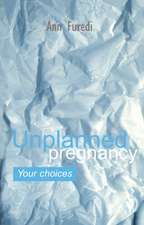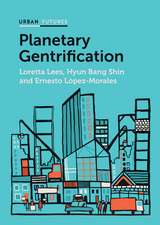Violence, Statistics, and the Politics of Accounting for the Dead: Demographic Transformation and Socio-Economic Development, cartea 4
Editat de Marc-Antoine Pérouse de Montclos, Elizabeth Minor, Samrat Sinhaen Limba Engleză Hardback – 22 feb 2016
The book begins with a strategic analysis of the body count that introduces a general discussion on the measurement of war violence; its treatment by the media, humanitarian organizations, governments and the military; and its legal and political implications. It then examines the accounting for civilian war casualties in past and future conflicts, investigates the way the International Committee of the Red Cross has dealt with the issue of missing persons and the identification of dead bodies in armed conflicts and explores the role of statistics in aid policydebates, especially in regards to humanitarian workers.
Next, the book details the field of casualty recording as practiced by civil society organizations, with insights from a study of 40 practitioners. It also features narrative case studies that detail the ways human losses were documented during recent conflicts in Northeastern India (2006-2009) and Croatia (1991-1995). In addition, one case study looks at the usefulness of casualty recording in engaging policymakers on the impacts of particular technologies of violence.
This book offers an insightful investigation into violence, statistics and the politics of accounting for the dead. It will appeal to a broad audience of policy-makers, human rights activists, humanitarian practitioners as well as academics.
| Toate formatele și edițiile | Preț | Express |
|---|---|---|
| Paperback (1) | 354.36 lei 39-44 zile | |
| Springer International Publishing – 21 mar 2019 | 354.36 lei 39-44 zile | |
| Hardback (1) | 367.70 lei 39-44 zile | |
| Springer International Publishing – 22 feb 2016 | 367.70 lei 39-44 zile |
Preț: 367.70 lei
Nou
Puncte Express: 552
Preț estimativ în valută:
70.36€ • 73.32$ • 58.26£
70.36€ • 73.32$ • 58.26£
Carte tipărită la comandă
Livrare economică 31 martie-05 aprilie
Preluare comenzi: 021 569.72.76
Specificații
ISBN-13: 9783319120355
ISBN-10: 3319120352
Pagini: 190
Ilustrații: X, 143 p. 12 illus.
Dimensiuni: 155 x 235 x 11 mm
Greutate: 0.4 kg
Ediția:1st ed. 2016
Editura: Springer International Publishing
Colecția Springer
Seria Demographic Transformation and Socio-Economic Development
Locul publicării:Cham, Switzerland
ISBN-10: 3319120352
Pagini: 190
Ilustrații: X, 143 p. 12 illus.
Dimensiuni: 155 x 235 x 11 mm
Greutate: 0.4 kg
Ediția:1st ed. 2016
Editura: Springer International Publishing
Colecția Springer
Seria Demographic Transformation and Socio-Economic Development
Locul publicării:Cham, Switzerland
Public țintă
ResearchCuprins
Chapter 1: General Introduction: Armed Conflicts and the Body Count: an Issue for Population Studies and Development: Marc-Antoine Pérouse de Montclos.- Part I: Methodologies, Development Issues and Politics: Chapter 2: Development Consequences of Armed Conflict: Scott Gates. Havard Hegre, Havard Mokleiv Nygard and Havard Strand.- Chapter 3: Numbers Count: Dead Bodies, Statistics and the Politics of Armed Conflicts: Marc-Antoine Pérouse de Montclos.- Chapter 4: Accounting for Civilian Casualties: From the Past to the Future: Nicholas Jewell, Michael Spagat and Britta Jewell.- Chapter 5: The ICRC, Confidentiality, Neutrality and Missing Persons, from a historical perspective: Isabelle Vonèche-Cardia.- Part II: Annexes: Case Studies of the Experience of Practitioners: Chapter 6: Recording Casualties of Explosive Violence: Evidence-based Advocacy in Practice: Henry Dodd and Robert Perkins.- Chapter 7: Measuring the Burden of Conflict through Local Newspapers: Findings from the ManipurMicro-level Insurgency Events Database of 2008-2009: Samrat Sinha.- Chapter 8: Documenting Human Losses in Croatia 1991 – 1995: Igor Roginek.- Chapter 9: Conclusion: The Demographics of War and Development: Issues for Policy-makers: Marc-Antoine Pérouse de Montclos.- Index.
Recenzii
“The book is a vital contribution for anyone involved beyond the numbers in this particularly difficult kind of excess mortality. … The book performs a notable service in documenting methodologies to measure and evaluate this special kind of excess mortality within the realm of population studies. … This book cannot be ignored by those engaged directly in this work and by those dealing with its consequences.” (Johanne Sanschagrin, Canadian Studies in Population, Vol. 44 (1-2), 2017)
Textul de pe ultima copertă
This book examines the methodological problems of accounting for the dead in armed conflicts as well as how the process itself is open to manipulation and controversy. Inspired by the work of the International Practitioner Network of casualty recording organizations, the book features thematic analysis, case studies and historical discussion on the use of the body count towards political, humanitarian and military ends.
The book begins with a strategic analysis of the body count that introduces a general discussion on the measurement of war violence; its treatment by the media, humanitarian organizations, governments and the military; and its legal and political implications. It then examines the accounting for civilian war casualties in past and future conflicts, investigates the way the International Committee of the Red Cross has dealt with the issue of missing persons and the identification of dead bodies in armed conflicts, and explores the role of statistics in aid policy debates, especially in regards to humanitarian workers.
Next, the book details the field of casualty recording as practiced by civil society organizations, with insights from a study of 40 practitioners. It also features narrative case studies that detail the ways human losses were documented during recent conflicts in Northeastern India (2006-2009) and Croatia (1991-1995). In addition, one case study looks at the usefulness of casualty recording in engaging policymakers on the impacts of particular technologies of violence.
This book offers an insightful investigation into violence, statistics and the politics of accounting for the dead. It will appeal to a broad audience of policy-makers, human rights activists, humanitarian practitioners as well as academics.
The book begins with a strategic analysis of the body count that introduces a general discussion on the measurement of war violence; its treatment by the media, humanitarian organizations, governments and the military; and its legal and political implications. It then examines the accounting for civilian war casualties in past and future conflicts, investigates the way the International Committee of the Red Cross has dealt with the issue of missing persons and the identification of dead bodies in armed conflicts, and explores the role of statistics in aid policy debates, especially in regards to humanitarian workers.
Next, the book details the field of casualty recording as practiced by civil society organizations, with insights from a study of 40 practitioners. It also features narrative case studies that detail the ways human losses were documented during recent conflicts in Northeastern India (2006-2009) and Croatia (1991-1995). In addition, one case study looks at the usefulness of casualty recording in engaging policymakers on the impacts of particular technologies of violence.
This book offers an insightful investigation into violence, statistics and the politics of accounting for the dead. It will appeal to a broad audience of policy-makers, human rights activists, humanitarian practitioners as well as academics.
Caracteristici
Examines the methodological problems of accounting for the dead in armed conflicts Discusses how the body count plays an important part in the narrative of war and its use towards political, humanitarian and military ends Features narrative case studies written by practitioners of casualty recording



























